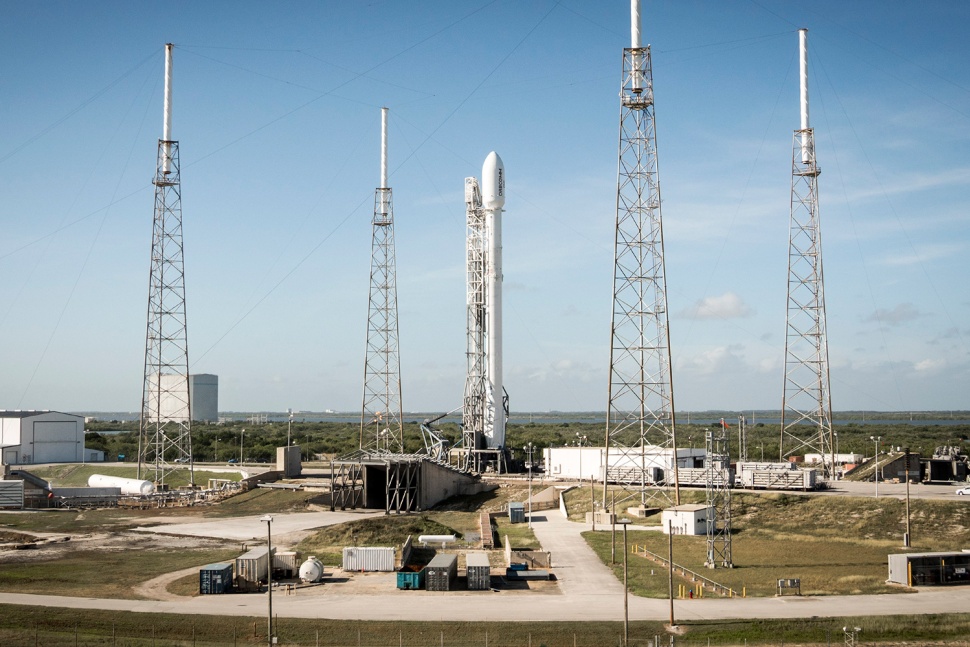[ot-caption title=”SpaceX’s Falcon 9 rocket at the Cape Canaveral Air Force Station in Florida. (via SpaceX/Flickr)”]
With an ever-increasing curiosity for the wider reaches of the cosmos and human space travel, numerous entrepreneurs, investors and scientists have greatly increased their activity in space exploration and the development of aerospace technology. Ranging from NASA’s Mars rovers to Amazon CEO Jeff Bezos’s Blue Origin rocket program, privately-funded spaceflight manufacturers and space agencies are testing new concepts and rockets to make human space travel financially prudent and efficient for a potentially larger sector of society.
In recent years, SpaceX has emerged as one of the leading spacecraft manufacturers and entrepreneurial enterprises in its industry. In 2010, the privately-funded company made headlines after it successfully launched its Falcon 9 rocket and subsequently recovered the spacecraft. On April 8th, 2016, SpaceX yet accomplished another fascinating milestone in aerospace history: it successfully landed part of its Falcon 9 rocket on a drone ship in the middle of the Atlantic Ocean. After four failed attempts that resulted in unsuccessful and ineffective landings, the company was finally able to land a rocket at sea. As SpaceX CEO Elon Musk explained, “What was different about this [landing] is that the rocket landed instead of putting a hole in the ship or tipping over.”
The Falcon 9 rocket was launched from the Cape Canaveral Air Force Station at the Kennedy Space Center in Florida at 4:43 PM in order to deliver a staggering 7,000 pounds of supplies and experimental equipment to the astronauts at the International Space Station.
The successful retrieval and landing of the rocket at sea is not only important in terms of its value to advances in space technology, but also in terms of its wide range of advantages in relation to making space travel more efficient, eco-friendly and cost-effective. According to Musk, a basic Falcon rocket costs nearly $60 million to manufacture and an additional $300,000 for its kerosene and liquid oxygen-based fuel. Such high financial costs make space travel especially expensive and ineffective. However, the reuse of rockets and their retrieval, such as in the case of the Falcon 9 rocket, can potentially pose a solution to making human space travel a true reality. Musk noted, “If you have got a rocket that can be fully and rapidly reused, it is somewhere on the order of a 100-fold cost reduction, in marginal costs.”
Upon the successful landing, large members of the scientific community as well as international news outlets shared their excitement for this historic landing. Even President Obama congratulated SpaceX and tweeted, “Congrats SpaceX on landing a rocket at sea. It’s because of innovators like you & NASA that America continues to lead in space exploration.”
With increasing emphasis on space exploration, maybe someday extensive human space travel will truly be a reality. As Musk notes, “This a really good milestone for the future of space flight.”
Sources: CNN News, PBS, Forbes
Photo Source: SpaceX Flickr
































![Stranger Things 4: What to Expect [Warning: Contains Spoilers]](https://pcpawprint.com/wp-content/uploads/2021/11/StrangerThings4-900x473.jpeg)























































